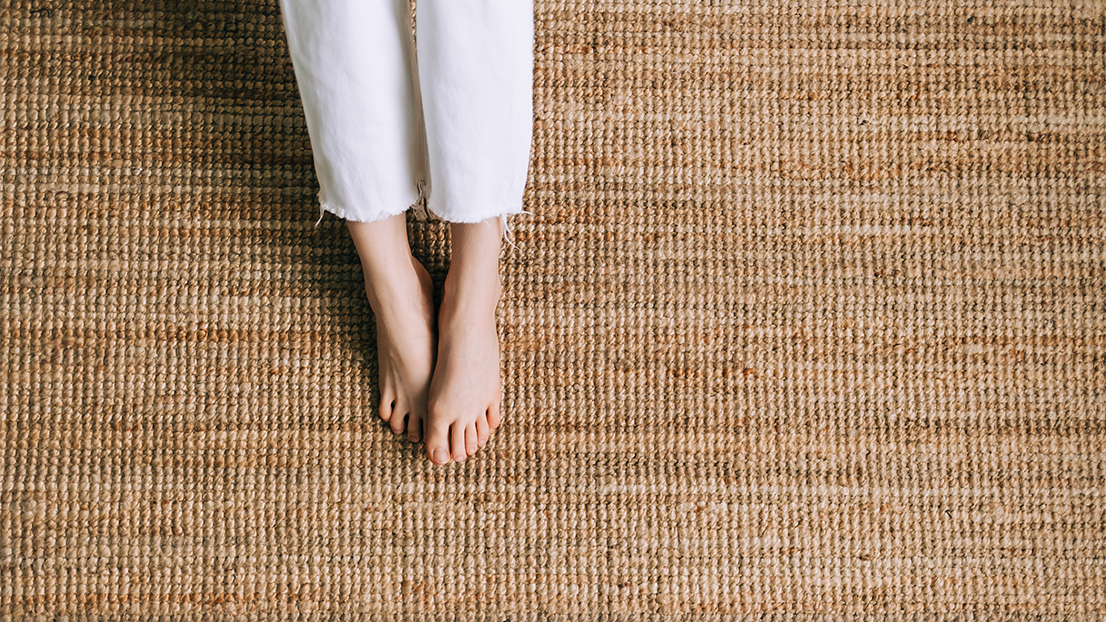
Sisal and coir are natural fibers which have been used in the manufacture of ropes and twines for many years. The fibers have also been used in doormats (coco mats) and rugs for hundreds of years. These fibers are now being used in wall-to-wall carpeting and in area rugs. Merida Meridian, located in Boston, Massachusetts, is a major importer of sisal and estimates that about 500,000 square yards of sisal and coir are sold each year. Sisal is the name given to the fibers that come from the tropical agave plant. The name comes from the name of the port city in Mexico from which sisal was first exported. Today most sisal comes from East Africa. Coir, which comes from the Malayam work kayar meaning cord or string, is the stiff fiber found between the outer husk and the inner shell of a coconut. Since they are both natural fibers, they are prone to absorbing liquids and staining.
It is recommended that these fibers not be used in high spillage areas. It is also important that the amount of liquid used during cleaning be controlled. That is why the HOST Dry Extraction Cleaning System is the preferred method of cleaning.
- Vacuum thoroughly using a HOST extractorVAC with the white brushes. (Always test brushes in an inconspicuous location before cleaning. If any texture change occurs, immediately switch to a softer brush.) Be sure to vacuum in every direction, north, south, east and west.
- Use HOST Dry Extraction Cleaner. Do not use HOST SJ as it may be difficult to vacuum out of these carpets.
- Do not use PREP or SPOT Remover. It is best to avoid the use of any liquids when cleaning sisal and coir
- Apply less HOST cleaner than normal and do more brushing with the machine. It is better to apply twice than to apply all the HOST cleaner in one application.
- Vacuum with the extractorVAC in all directions as with the prevacuuming step.
Sisal and coir contain natural coloring (brown or tan) which may be unstable when cleaned. Sometimes these fabrics are dyed other colors, such as red, blue or green. It is possible to alter the color during cleaning. Since these are natural fibers, they are not as colorfast as some of the synthetics used in carpet manufacturing.
The color change is usually very slight, but the customer should be made aware of this before cleaning. If the customer has any concern or objection to this slight color change, don’t clean the floor covering. Recognize that if HOST causes color change, other methods of cleaning will also cause color change. Sometimes what appears to be a color change is merely trapped HOST cleaner in the yarns which can be removed with additional, aggressive vacuuming with an extractorVAC. If these recommendations are followed, the floor covering should clean satisfactorily. This material is irregular and the surface appearance is distressed and uneven. This yields a desirable texture effect. The brushing action may aggravate the distressed or uneven texture, but it may not be noticeable. Watch the texture as you clean for signs of too much fuzzing.
Jute is also a natural fiber that has been used in carpeting for many years, usually as a backing material. Jute comes from the jute plant which is common in India and Bangladesh. The natural brown coloring of jute is sometimes the cause of a condition known as browning. Browning is usually caused by overwetting a carpet that has a jute backing. When the jute backing gets wet, the natural brown coloring wicks to the surface, causing the brown stain. Today some manufacturers are selling a floor covering made from jute. Our tests have shown HOST will remove the color, making the surface appear several shades lighter. We do not know how this fabric can be successfully cleaned without causing this color loss. This color loss is more noticeable on darker jute rugs. Be sure the customer understands this.

